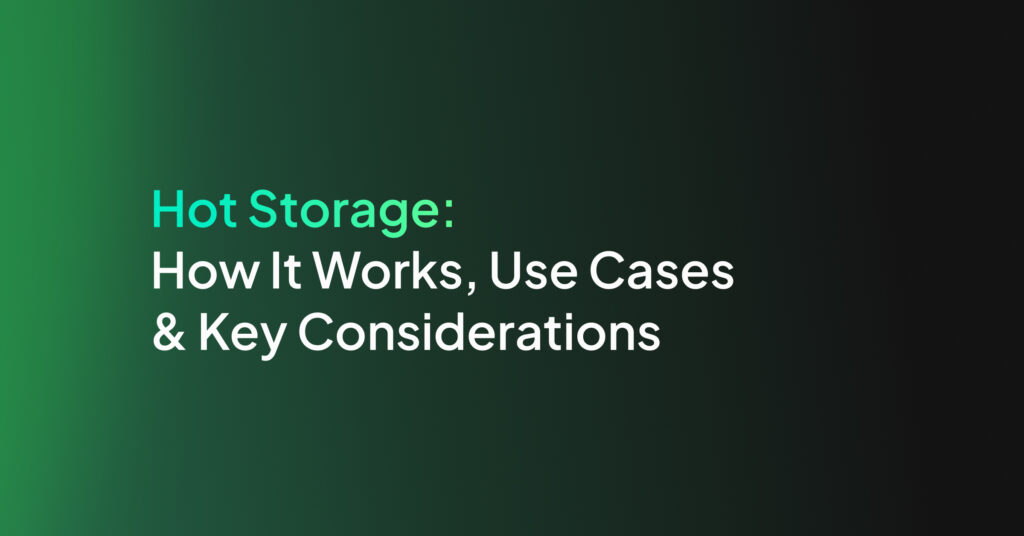Database Monitoring: Types, Challenges & Selecting a Solution

Why Is Database Monitoring Important?
Monitoring databases is important for several reasons.
Ensuring Availability
A database outage can lead to significant business disruption. By using monitoring tools, organizations can detect potential downtime threats early and mitigate them before they impact service. Continuous surveillance ensures that the system remains operational, reducing the risk of unexpected failures or prolonged unavailability.
Ensuring Performance
Database performance directly impacts user experience and operational effectiveness. Monitoring tools analyze performance metrics like query times, server load, and index efficiency to ensure optimal functionality. By keeping a close watch on these metrics, administrators can identify bottlenecks and optimize query processing.
Ensuring Security
Through continuous audit logs and activity tracking, monitoring tools detect unauthorized access or unusual patterns indicating a security breach. This vigilance is critical in protecting sensitive data and maintaining compliance with security standards. Database monitoring tools also help enforce security policies by generating reports on access patterns and permission changes.
Types of Database Monitoring
When monitoring databases, there are several aspects of the database that organizations need to focus on.
Performance Monitoring
Performance monitoring focuses on maintaining database efficiency by tracking key performance indicators (KPIs) such as response time, CPU usage, and transaction throughput. These metrics help identify inefficiencies and performance bottlenecks. Through regular assessment, administrators can make informed decisions about tuning and resource allocation.
Additionally, performance monitoring tools use techniques such as load testing and trend analysis. Load testing evaluates how the database system behaves under peak load conditions, while trend analysis provides historical data to predict future performance and capacity needs.
Security Monitoring
Security monitoring involves scrutinizing activities to protect against threats and compliance breaches. These tools generate logs of database activities, helping administrators spot anomalies that might indicate unauthorized access. They also ensure that audit trails are maintained, aiding in forensic investigations if required.
Security monitoring tools can also enforce policies through role-based access controls and permissions audits. They systematically check for vulnerabilities, compliance violations, and policy deviations.
Availability Monitoring
Availability monitoring ensures that databases are functioning and accessible when needed. This involves tracking uptime statistics, server availability, and backup operations. Alerts can be configured to notify administrators about failures or downtime, enabling quick response.
In addition, these tools assist with disaster recovery strategies by verifying that backups are operating correctly and are recoverable. They provide data on service continuity and systems resilience.
Logs Monitoring
Logs monitoring focuses on analyzing logs generated by database systems. This practice helps in tracing errors, auditing system activities, and ensuring compliance with regulatory requirements. By examining transaction logs and error reports, administrators can gain insights into system issues and resolve them promptly.
Effective logs monitoring often involves automated log parsing and analysis for real-time insights. It allows for identifying patterns and trends in logs that might denote system irregularities or persistent issues.
Compliance Monitoring
Compliance monitoring ensures that database operations align with relevant regulatory and organizational standards. It involves tracking changes, reviewing access controls, and auditing data handling practices. Compliance monitoring tools help organizations maintain evidence of compliance and audit readiness.
These tools offer automated reporting and alerting features to highlight non-compliance issues. They ensure that database configurations and user activities adhere to policies, minimizing the risk of regulatory penalties.
Learn more in our detailed guide to real user monitoring
Proactive vs Reactive Database Monitoring
Proactive database monitoring aims to anticipate and prevent issues before they arise, enhancing system reliability. It involves continuous analysis of performance trends, resource utilization, and potential failure points. This approach enables administrators to implement optimizations and adjustments ahead of time.
Reactive monitoring focuses on responding to issues after they occur. Although less desirable, it remains essential for addressing unexpected failures and immediate problems. Both approaches complement each other; proactive measures reduce incidents, while reactive strategies ensure rapid resolution when issues arise.
Common Challenges in Database Monitoring
When monitoring databases, it is important to be aware of the potential challenges.
Impact on System Performance
Implementing database monitoring can inadvertently affect system performance. Monitoring tools consume system resources, potentially impacting database speed and responsiveness. It’s important to balance the level of monitoring to avoid significant performance degradation while still gaining valuable insights.
To mitigate this, administrators should consider using lightweight agents and scheduling monitoring activities during off-peak hours. These practices help limit resource strain and ensure the database’s core functions aren’t compromised during monitoring.
Handling Encrypted Data
Monitoring encrypted data poses challenges due to the secure nature of encryption that restricts direct access to sensitive information. Tools must be able to decrypt data safely without exposing it to vulnerabilities. Secure methods must be used to monitor and report on this data without sacrificing security.
Encryption adds complexity to monitoring activities, requiring advanced tools capable of handling secure data streams. Integration with encryption protocols and secure key management is essential in gaining necessary insights while respecting data privacy.
Large Data Volumes
The sheer size of data can complicate monitoring processes, leading to delays or data loss. The monitoring tools must efficiently handle these volumes while ensuring timely analysis and reporting.
Scalability of monitoring tools is necessary for managing increased data loads. Implementing partitioning, data compression, and archiving strategies can help optimize performance. Adapting tools to data growth ensures that insights from monitoring activities remain accurate and relevant.
What Should You Look for in a Database Monitoring Tool?
Here are some of the main aspects to consider when evaluating database monitoring solutions.
Real-Time Monitoring and Alerting
Real-time monitoring and alerting features allow administrators to receive immediate notifications of issues, enabling quick resolution and reducing downtime. Real-time capabilities ensure that critical issues are addressed promptly.
Alerting systems should support multiple communication channels and customizable alert thresholds. This flexibility ensures that alerts are timely and relevant, empowering administrators to prioritize responses based on criticality.
Cross-Platform Support
Cross-platform support in a monitoring tool allows for integration across different operating systems and database environments. This flexibility eases the management complexity of heterogeneous database systems, providing a unified monitoring approach regardless of the underlying technology.
Tools offering cross-platform capabilities aid in centralizing monitoring efforts, reducing administrative overhead, and increasing operational efficiency. They ensure consistent data collection and reporting, irrespective of platform differences.
Resource Utilization Optimization
The monitoring tools should support efficient resource tracking and analysis, enabling administrators to simplify operations and improve performance. This involves monitoring CPU, memory, and storage usage, identifying areas for optimization.
Resource utilization capabilities aid in balancing system loads and optimizing infrastructure investments. By providing insights into resource consumption patterns, the tools enable strategic adjustments to achieve cost-effective database operations.
Customizable Dashboards and Reports
Customizable dashboards and reporting tools offer significant advantages, allowing users to tailor displays and reports to their needs. This customization improves data visibility and relevance, supporting more precise analysis and decision-making.
Tools providing customizable features allow organizations to focus on specified metrics and KPIs relevant to their operations. This targeted approach benefits both day-to-day performance evaluation and long-term strategic planning.
Proactive Problem Resolution
Proactive problem resolution focuses on identifying potential issues before they escalate into full-blown problems. Monitoring tools with predictive analytics capabilities provide valuable foresight, enabling administrators to make preemptive adjustments.
These tools offer predictive insights based on historical data and trends. By anticipating issues and notifying administrators beforehand, they improve system reliability and prevent service disruptions.
Related content: Read our guide to observability tools
Database Monitoring with Coralogix
Coralogix sets itself apart in observability with its modern architecture, enabling real-time insights into logs, metrics, and traces with built-in cost optimization. Coralogix’s straightforward pricing covers all its platform offerings including APM, RUM, SIEM, infrastructure monitoring and much more. With unparalleled support that features less than 1 minute response times and 1 hour resolution times, Coralogix is a leading choice for thousands of organizations across the globe.




![Distributed Tracing: Concepts, Pros/Cons & Best Practices [2025 Guide]](https://coralogix.com/wp-content/uploads/2024/12/40-1-1024x536.jpg)
